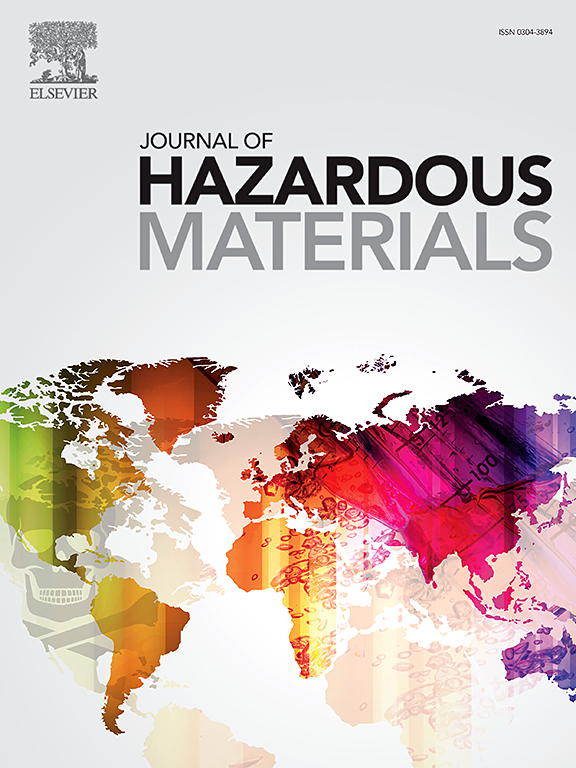Uncovering the transcriptional regulatory network underlying selenium tolerance in maize seedlings
IF 12.2
1区 环境科学与生态学
Q1 ENGINEERING, ENVIRONMENTAL
引用次数: 0
Abstract
Selenium (Se) plays a dual role in plant growth, functioning as both an essential micronutrient and a potential toxin. Understanding the regulatory mechanisms of Se tolerance is crucial for enhancing crop resilience and biofortification. In this study, we integrated transcriptomics (RNA-seq), chromatin accessibility (ATAC-seq), and genome-wide association studies (GWAS) to elucidate the regulatory networks governing Se responses in maize seedlings. Low Se concentrations (≤ 0.05 mM) enhanced plant growth and biomass accumulation, whereas high Se concentrations (≥ 0.1 mM) induced toxicity and suppressed growth. Different treatment groups exhibited dose-dependent transcriptional reprogramming, with significant upregulation of genes involved in glutathione biosynthesis, Se metabolism, and jasmonic acid (JA) signaling. Concurrent chromatin accessibility remodeling in promoter regions orchestrated the transcriptional responses of these key genes. Characterization of the ZmGSTs gene family revealed subfamily-specific expression patterns and regulatory mechanisms under Se stress. Integration of high-confidence transcriptional regulatory networks with GWAS data led to the identification of a key metabolic gene (ZmGSR2) in the selenium metabolism pathway and three important transcription factors (ZmWRKY48, ZmbZIP123, and ZmKNOX6) that specifically activated distinct ZmGSTs genes. This study provides novel insights into the genetic and epigenetic mechanisms underlying selenium tolerance and identifies potential targets for improving crop selenium adaptability.

揭示玉米幼苗耐硒性的转录调控网络
硒(Se)在植物生长中起着双重作用,既是一种必需的微量元素,也是一种潜在的毒素。了解耐硒性的调控机制对提高作物抗逆性和生物强化具有重要意义。在这项研究中,我们整合了转录组学(RNA-seq)、染色质可及性(ATAC-seq)和全基因组关联研究(GWAS)来阐明玉米幼苗硒响应的调控网络。低硒浓度(≤0.05 mM)促进植物生长和生物量积累,高硒浓度(≥0.1 mM)诱导毒性,抑制生长。不同的治疗组表现出剂量依赖性的转录重编程,参与谷胱甘肽生物合成、硒代谢和茉莉酸(JA)信号传导的基因显著上调。启动子区域染色质可及性重构协调了这些关键基因的转录反应。ZmGSTs基因家族的特征揭示了硒胁迫下亚家族特异性表达模式和调控机制。高可信度转录调控网络与GWAS数据的整合导致鉴定出硒代谢途径中的关键代谢基因(ZmGSR2)和三个重要的转录因子(ZmWRKY48, ZmbZIP123和ZmKNOX6)特异性激活不同的ZmGSTs基因。该研究为揭示作物硒耐受性的遗传和表观遗传机制提供了新的见解,并确定了提高作物硒适应性的潜在靶点。
本文章由计算机程序翻译,如有差异,请以英文原文为准。
求助全文
约1分钟内获得全文
求助全文
来源期刊

Journal of Hazardous Materials
工程技术-工程:环境
CiteScore
25.40
自引率
5.90%
发文量
3059
审稿时长
58 days
期刊介绍:
The Journal of Hazardous Materials serves as a global platform for promoting cutting-edge research in the field of Environmental Science and Engineering. Our publication features a wide range of articles, including full-length research papers, review articles, and perspectives, with the aim of enhancing our understanding of the dangers and risks associated with various materials concerning public health and the environment. It is important to note that the term "environmental contaminants" refers specifically to substances that pose hazardous effects through contamination, while excluding those that do not have such impacts on the environment or human health. Moreover, we emphasize the distinction between wastes and hazardous materials in order to provide further clarity on the scope of the journal. We have a keen interest in exploring specific compounds and microbial agents that have adverse effects on the environment.
 求助内容:
求助内容: 应助结果提醒方式:
应助结果提醒方式:


